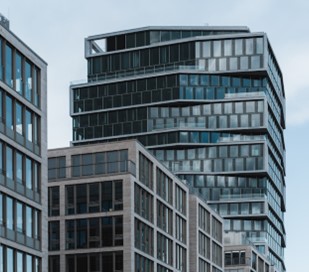
In the evolving world of real estate development, where budget constraints, labor shortages, and environmental concerns are constantly at play, modular construction has emerged as a disruptive and promising alternative to traditional building methods. Also known as prefabricated construction, modular construction involves assembling sections—or modules—of a building offsite in a factory setting, then transporting and installing them on a prepared foundation. While the concept has been around for decades, recent technological advances and increasing demand for faster, more cost-effective, and sustainable building solutions have sparked a resurgence of interest among developers worldwide.
David Shulick delves into how modular construction is transforming the real estate industry by reducing costs, accelerating project timelines, and offering a more sustainable way to build.
A Cost-Conscious Approach to Construction
One of the most significant drivers behind the rise of modular construction is cost efficiency. Traditional construction projects often run over budget due to labor shortages, material waste, weather delays, and unforeseen site conditions. Modular construction addresses many of these issues upfront.
By fabricating modules in a controlled factory environment, developers can significantly reduce labor costs and material waste. Labor is typically more consistent and less expensive in offsite facilities, and materials can be ordered in bulk, stored efficiently, and used with greater precision. The repeatability of the production process also means fewer mistakes and less rework—two major cost-saving factors.
According to a report by McKinsey & Company, modular construction can reduce overall project costs by 20% or more in certain cases. This level of savings is particularly attractive for multi-family housing projects, hotels, student housing, and healthcare facilities—sectors that often rely on standardized room layouts and repetitive designs.
Speeding Up the Timeline: Faster Time to Market
For developers, time is money. Every day a project is delayed represents a lost opportunity to generate revenue, particularly in high-demand markets. Modular construction dramatically shortens the construction timeline by allowing site preparation and module fabrication to occur simultaneously. While the foundation is being laid, building components are being constructed offsite. Once the site is ready, modules can be delivered and assembled rapidly, often within days or weeks.
This overlap in processes can result in project completion times that are 30–50% faster than traditional construction methods. For example, in urban centers where construction schedules are tightly regulated and subject to restrictions (such as noise ordinances or limited access hours), modular construction’s quick assembly on-site is a clear advantage.
Speed also enhances a developer’s ability to respond to market demands or public needs. During the COVID-19 pandemic, modular construction was used to quickly build temporary healthcare facilities and isolation units across the globe. These projects demonstrated not only the speed but also the scalability of modular methods.
Sustainability at the Core
As sustainability becomes a non-negotiable pillar in modern development, modular construction provides an inherently greener solution. The factory-controlled environment enables better resource management, reducing the volume of construction waste sent to landfills. Standardization and digitization of the building process—often through Building Information Modeling (BIM)—enable more precise planning and optimization of materials.
Additionally, the environmental impact of transportation and heavy equipment use is reduced on job sites since fewer deliveries and less on-site work are required. Many modular builders are now incorporating eco-friendly materials and energy-efficient systems directly into their designs, making it easier to meet or exceed environmental regulations and green building certifications like LEED or WELL.
Moreover, because modules are manufactured in a repeatable and controlled process, buildings can be designed with disassembly in mind. This means they can be more easily repurposed or recycled at the end of their lifecycle, contributing to a circular economy in construction.
Overcoming the Challenges
While the benefits of modular construction are substantial, the method is not without challenges. For one, the industry still faces a perception problem. Some stakeholders associate modular buildings with poor design or lower quality due to outdated examples of “cookie-cutter” prefab homes. However, modern modular construction allows for remarkable architectural flexibility, high-end finishes, and customization, rivaling or even surpassing traditional construction in quality.
Another hurdle is the need for early and precise planning. Modular projects require decisions about design, materials, and mechanical systems to be finalized much earlier in the development timeline. This may be a shift in mindset for developers used to adjusting plans midstream.
Logistics and transportation can also be complicated, particularly for large modules or urban sites with limited access. However, many modular construction companies are innovating around these challenges with better transportation strategies, collapsible modules, or smaller, stackable components.
Lastly, building codes and permitting processes can vary significantly across jurisdictions. Not all municipalities are equipped to handle the nuances of modular development, which can delay approvals or necessitate additional documentation.
A Growing Industry with Massive Potential
Despite these obstacles, the modular construction industry is experiencing strong growth. Developers and investors are taking notice, especially as housing affordability crises and urban density challenges demand quicker, cheaper, and more efficient solutions. According to research firm MarketsandMarkets, the global modular construction market is projected to grow from $97 billion in 2023 to $141 billion by 2028.
Major players in the real estate world—from Marriott International to Google—have already embraced modular construction for large-scale projects. In the affordable housing sector, nonprofits and local governments are partnering with modular builders to deliver units faster and at lower cost, addressing critical shortages in housing stock.
Modular construction is not just a trend—it’s a transformative approach that holds immense promise for the future of real estate development. By reducing costs, accelerating timelines, and promoting sustainability, modular methods are addressing some of the industry’s most pressing challenges head-on. As technology continues to advance and regulatory frameworks adapt, it’s likely that more developers will embrace modular as a core strategy in their portfolios.
Whether it’s building affordable housing, scaling commercial real estate, or responding to global crises, modular construction is proving that sometimes, thinking inside the box is exactly what the industry needs.















